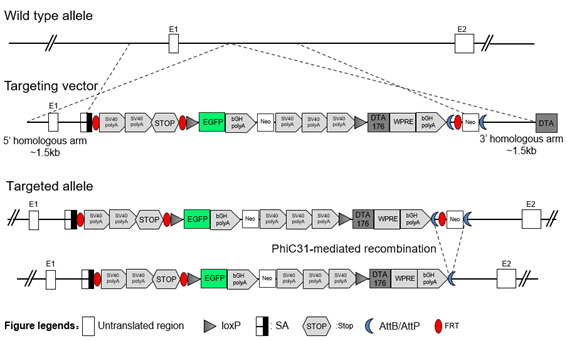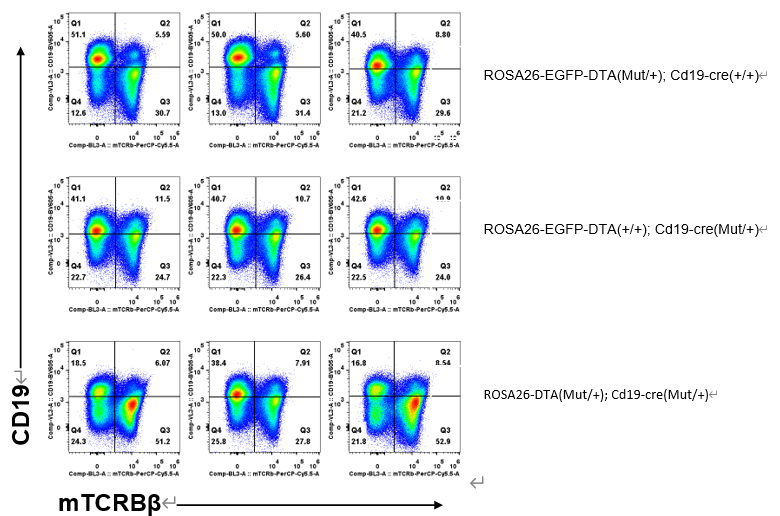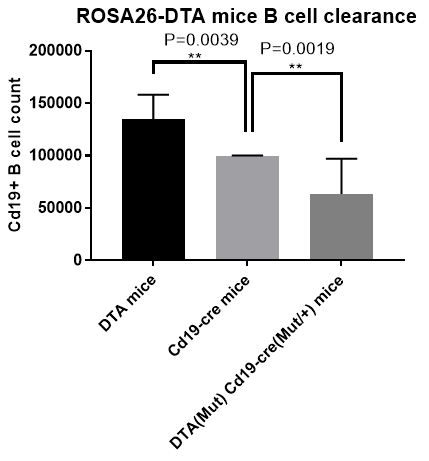


C57BL/6-Gt(ROSA)26Sortm1(FSF-EGFP-LSL-DTA)Bcgen/Bcgen • 110156

| Product name | B-ROSA26-EGFP-DTA mice |
|---|---|
| Catalog number | 110156 |
| Strain name | C57BL/6-Gt(ROSA)26Sortm1(FSF-EGFP-LSL-DTA)Bcgen/Bcgen |
| Strain background | C57BL/6 |
| Official symbol | gene trap ROSA 26 |
| Chromosome | 6 |
| Application | Function researchof genes Deletion of specific groups of cells |

The ROSA26-EGFP-DTA allele has a frt-flanked STOP sequence (2xSV40 pA-lox2 stop) and a loxP-flanked STOP sequence (EGFP-Neo-3xpolyA) upstream of the diphtheria toxin A subunit (DTA) gene. After removal of the flanked STOP cassettes (2xSV40 pA-lox2 stop) by FLP-recombination, mutant mice display widespread expression of EGFP, but DTA transcription is still prevented by the strong transcriptional stop sequence(EGFP-Neo-3xpolyA). When bred to mice that express Cre recombinase under the control of a promoter of interest, the floxed-STOP cassette is removed and DTA expression is activated - resulting in the specific ablation of the cre-expressing cells. Homozygous mice are viable, normal in size, and do not display any gross physical or behavioral abnormalities. The donating investigator reports that some homozygous males are subfertile. ROSA26-EGFP-DTA mice may be useful on their own as a fluorescent reporter, or in combination with cre-expressing mice to produce conditional deletions of specific groups of cells. ROSA26-EGFP-DTA mice may also have applications in toxicology and protein synthesis research.
DTA, Diphtheria toxin fragment A; EGFP, enhanced green fluorescent protein
The mutant mice will display widespread expression of EGFP, after removal of the flanked STOP cassettes by FLP-recombination. When the ROSA26-EGFP-DTA mice mated with the mice Cre recombinase expressing specially, the loxP-flanked EGFP and stop sequence will be removed, and DTA expression is activated, then resulting in the specific ablation of iCre-expressing cells.


B cell from spleen, Flow cytometry analysis showed that the number of B cells specifically expressing Cre recombinase was significantly reduced in single cells of spleen, which proved that B cells specifically expressed DTA, and DTA successfully cleared B cells in spleen.